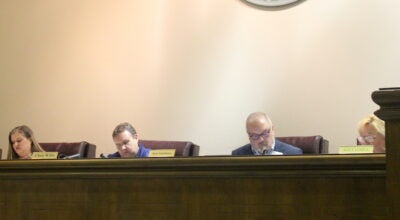Pelham pilot returned to flying shortly before crash
Published 4:33 pm Wednesday, January 12, 2011
By NEAL WAGNER / City Editor
A Pelham man who died in a Jan. 5 plane crash in downtown Birmingham was a longtime pilot, a friendly and outgoing man and had recently purchased the aircraft involved in the crash, according to his wife, Karen.
Gene Scott, who would have turned 60 on Jan. 10, died at about 6:45 p.m. when his Beech 58P aircraft crashed near the intersection of Seventh Avenue North and 80th Street in Birmingham’s East Lake neighborhood.
Scott, who owned Pee Wee’s Pawn Shop off U.S. 31 in Pelham for several years, had been flying for decades before the crash, Karen Scott said.
Scott took a hiatus from flying after he was injured in a 1995 aircraft accident. During the incident, Scott’s plane had a mechanical failure, forcing him to make an emergency landing.
“Gene was the most severely injured of all of us, requiring titanium in his cheek to put back together the left side of his face, and pins in his left ankle,” Karen Scott said. “Everyone else had minor injuries, and he avoided the homes that were on the ground with his quick reflexes and skillful maneuvering.”
Scott, a graduate of Calera High School and the University of Montevallo, had a passion for flying and traveling around the world, hunting and fishing, Karen Scott said. He was awaiting the birth of his first grandchild when he died.
“The upcoming birth of his first grandchild had him filled with anticipation and joy,” she said. “He didn’t care if the child is a girl or a boy. He just wanted it to be healthy and happy, and he couldn’t wait to spoil this child immensely.”
According to a preliminary crash report recently released by the National Transportation Safety Board, Scott was traveling from Morristown Municipal Airport in New Jersey to the Shelby County Airport.
His six-seat 1982 Beech aircraft had recorded 3,285 hours of flight time at its last inspection in October 2010, and Scott had logged more than 1,500 hours of flight time, according to the report.
But after arriving in Alabama and checking the weather report in Shelby County, Scott decided to attempt to land at the Birmingham-Shuttlesworth International Airport.
According to the NTSB report, the Birmingham control tower cleared Scott to use the instrument landing system, which is used to help pilots land in inclement weather or low-visibility conditions.
As he approached the Birmingham runway, Scott’s plane began to drift left of the landing course and above the elevation needed to land safely. As he got closer to the runway, his aircraft drifted further left of the course and fell below the safe landing elevation.
“The tower controller then provided heading and altitude instructions in an attempt to guide the pilot onto a missed approach,” read the report. “The pilot acknowledged the heading instruction, but failed to turn to the assigned heading and climb to the assigned altitude.
“No further communications were received from the accident airplane and radar contact was lost,” the report read.
Scott’s aircraft crashed in a densely populated area about a half-mile south of the runway, but did not injure anyone on the ground.
No trees were damaged near his wreck site, and there was no debris trail near the crash, read the report.
“My fondest memories of him are when we were traveling together, and how he could take charge of any situation and keep us safe,” Karen Scott said. “He can never be replaced in our lives.”










